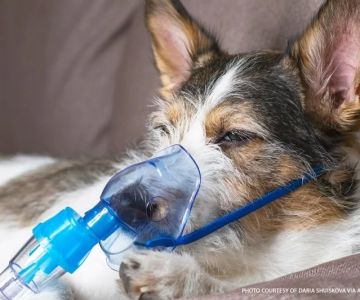Understanding Why Your Dog Whines Constantly
As a dog owner, one of the most perplexing and sometimes frustrating behaviors your furry friend might exhibit is constant whining. Whether it's a high-pitched whine or a persistent, low-frequency sound, this vocalization can leave you feeling helpless and unsure of how to address it. Over time, this behavior can not only become annoying but also make you worry about your dog's well-being. But why do dogs whine? And more importantly, how can you stop this behavior effectively?

1946 S Christopher Columbus Blvd, Philadelphia, PA 19148, USA
See DetailsThe Most Common Reasons Behind Dog Whining
Before diving into solutions, it's crucial to first understand why your dog is whining. Like humans, dogs communicate through vocalizations, and whining is one of their ways of expressing themselves. Here are some of the most common reasons why dogs whine:
1. Attention-Seeking Behavior
One of the most common reasons dogs whine is simply because they want attention. If your dog has learned that whining gets them the attention they crave, whether it's a pat on the head, a treat, or just your presence, they might use this behavior to get what they want. If you’ve ever given in to their whining by providing affection or treats, you might unknowingly be reinforcing the behavior.
2. Anxiety and Stress
Whining can also be a sign of anxiety or stress. If your dog is feeling nervous, they may whine as a way to express their discomfort. This can happen if your dog is left alone for long periods, during thunderstorms, or when they are in an unfamiliar environment. Dogs that suffer from separation anxiety, in particular, tend to whine excessively when their owners leave them alone.
3. Physical Discomfort or Illness
Sometimes, dogs whine because they're in pain or discomfort. It could be as simple as a tummy ache, an injury, or something more serious like arthritis or an underlying medical condition. If your dog’s whining is new or has suddenly become more frequent, it’s a good idea to visit the vet to rule out any health issues. Pain-induced whining is often accompanied by other symptoms such as limping, lethargy, or a loss of appetite.
4. Hunger or Thirst
Don't forget that your dog might just be hungry or thirsty. If it's close to their mealtime and they are starting to whine, it could be their way of reminding you that it's time for a snack or dinner. Make sure your dog's feeding schedule is consistent, and they have access to fresh water throughout the day.
5. Wanting to Go Outside
Dogs that are potty training or those who are used to frequent bathroom breaks may whine to signal that they need to go outside. If you notice your dog whining and circling near the door, they are probably trying to communicate their need to relieve themselves.
How to Stop Your Dog From Whining
Now that you have a better understanding of why your dog might be whining, let's focus on how to address the behavior. Depending on the root cause of your dog’s whining, different approaches might be necessary. Here are several strategies that can help reduce or stop the whining:
1. Reinforce Calm Behavior
If your dog whines to get attention, it’s important to stop reinforcing the behavior by giving in to their demands. Instead, try to ignore the whining and only provide attention when your dog is calm. This will teach them that calm behavior gets rewarded, while whining does not.
2. Provide a Safe Space for Your Dog
If anxiety is the cause of the whining, creating a safe, quiet space for your dog to relax can help reduce stress. This could be a crate or a designated area in your home where your dog feels secure. Consider using calming products such as dog-appeasing pheromones or anxiety-reducing music to help your dog feel more at ease.
3. Regular Exercise and Mental Stimulation
A tired dog is a happy dog. Make sure that your dog is getting enough physical exercise and mental stimulation throughout the day. Long walks, playtime, and interactive toys can keep your dog engaged and prevent boredom, which is often a trigger for whining.
4. Address Health Issues Promptly
If your dog is whining due to illness or discomfort, it’s essential to address any health issues immediately. Take your dog to the vet for a thorough check-up to rule out pain or illness. Once the underlying issue is treated, the whining should subside.
5. Establish a Consistent Routine
Dogs thrive on routine, and inconsistencies can cause stress. Establishing a regular schedule for feeding, walks, playtime, and bathroom breaks can help reduce anxiety and prevent whining. This predictability will help your dog feel more secure in their environment.
Real-Life Story: How I Helped My Dog Stop Whining
To give you a real-world example, let me share a story from my own experience. I have a Border Collie named Max, and he used to whine constantly whenever he wanted attention or was feeling anxious. At first, I gave him treats or affection whenever he whined, which only made things worse. The turning point came when I realized I needed to stop rewarding the behavior and focus on teaching Max calmness. I ignored his whining, and after a few days, I saw improvement.
We also started establishing a consistent routine. Max now knows when it’s time to go outside, eat, and play. He’s much calmer, and the whining has significantly decreased. Of course, there are still moments when he whines for attention, but now I simply redirect his energy with playtime or training exercises, and the whining stops.
Every dog is different, so it may take some trial and error to find the right solution for your dog. But with patience, consistency, and the right strategies, you can help your dog reduce or stop whining altogether.









